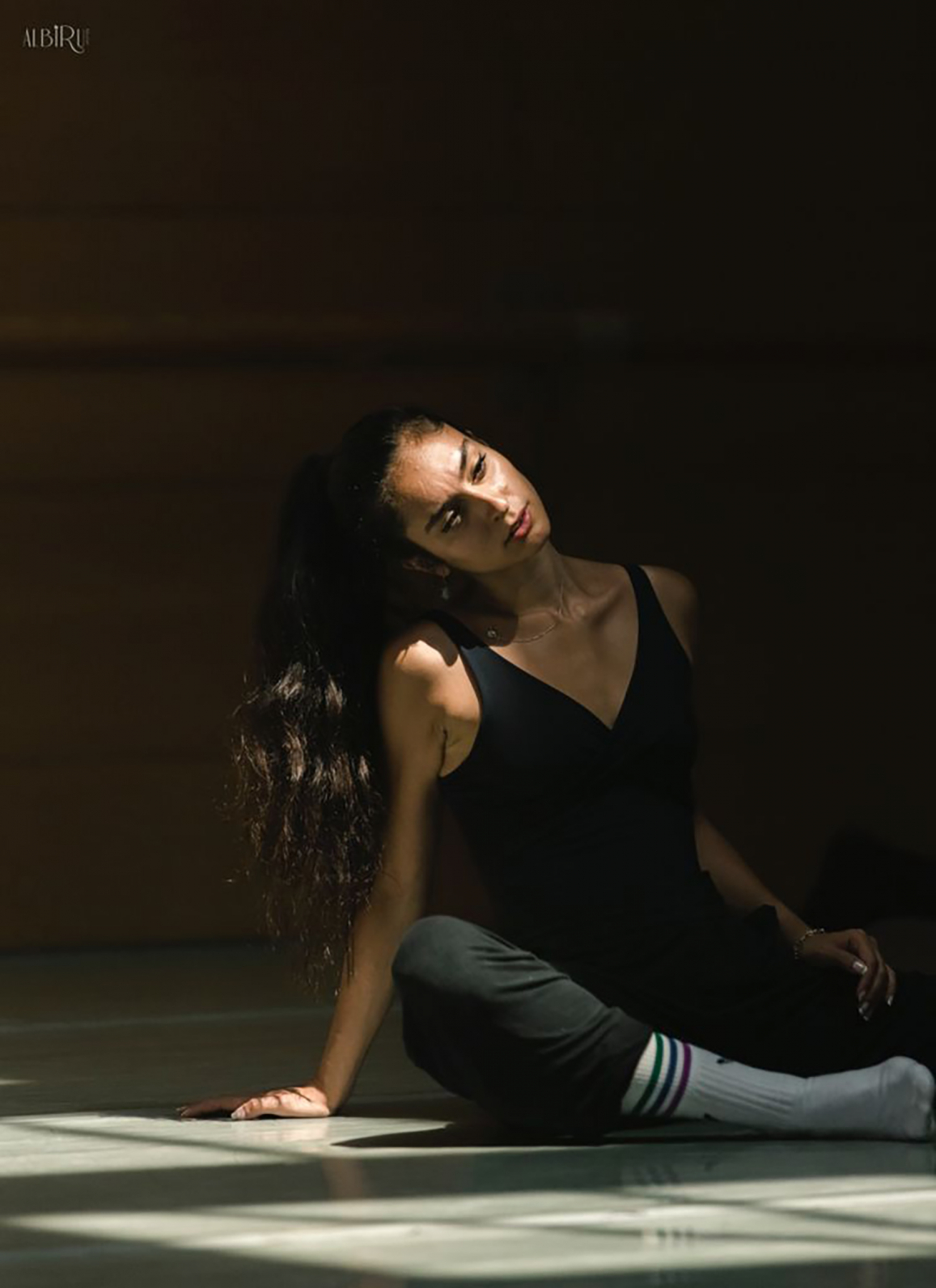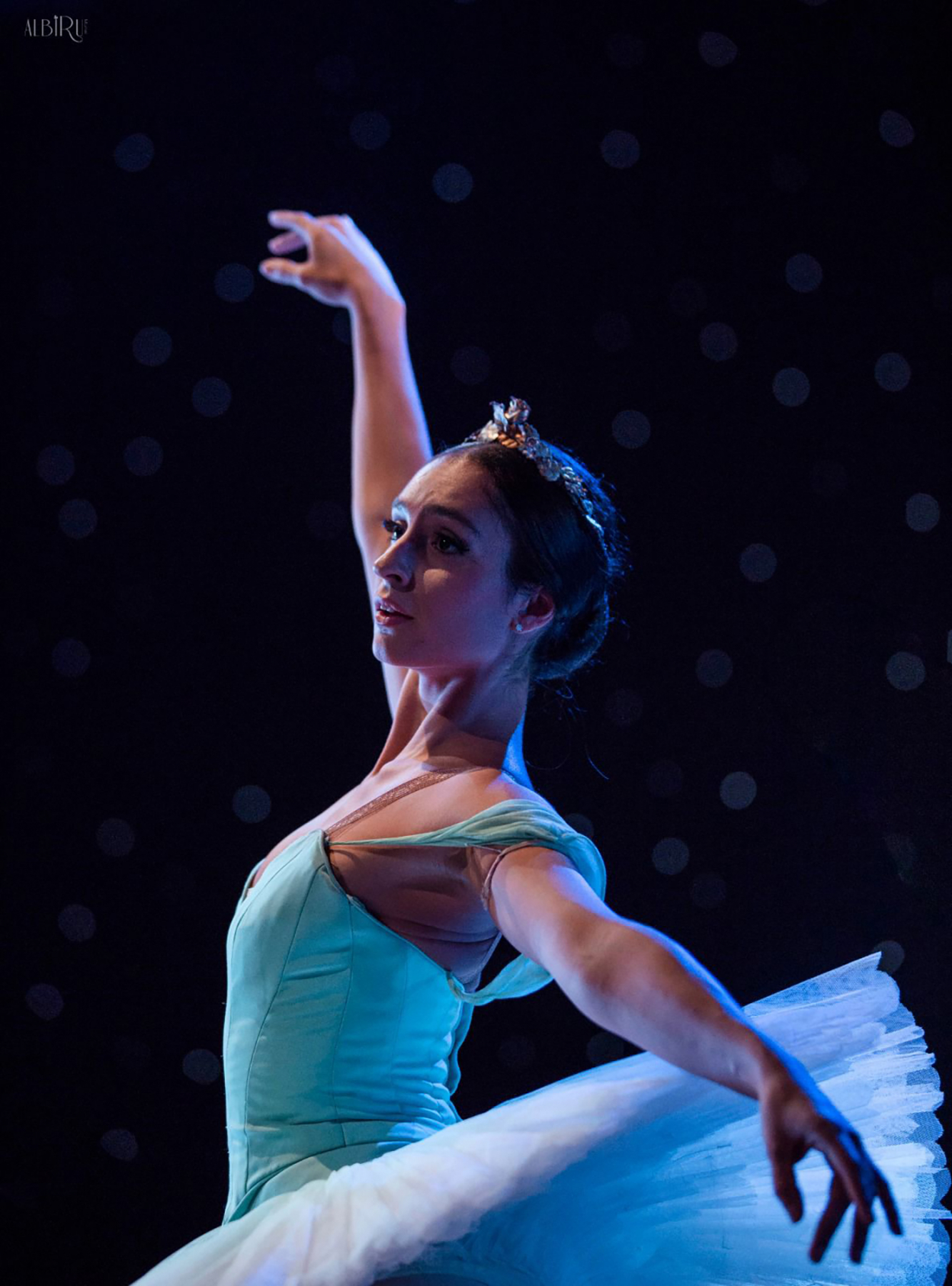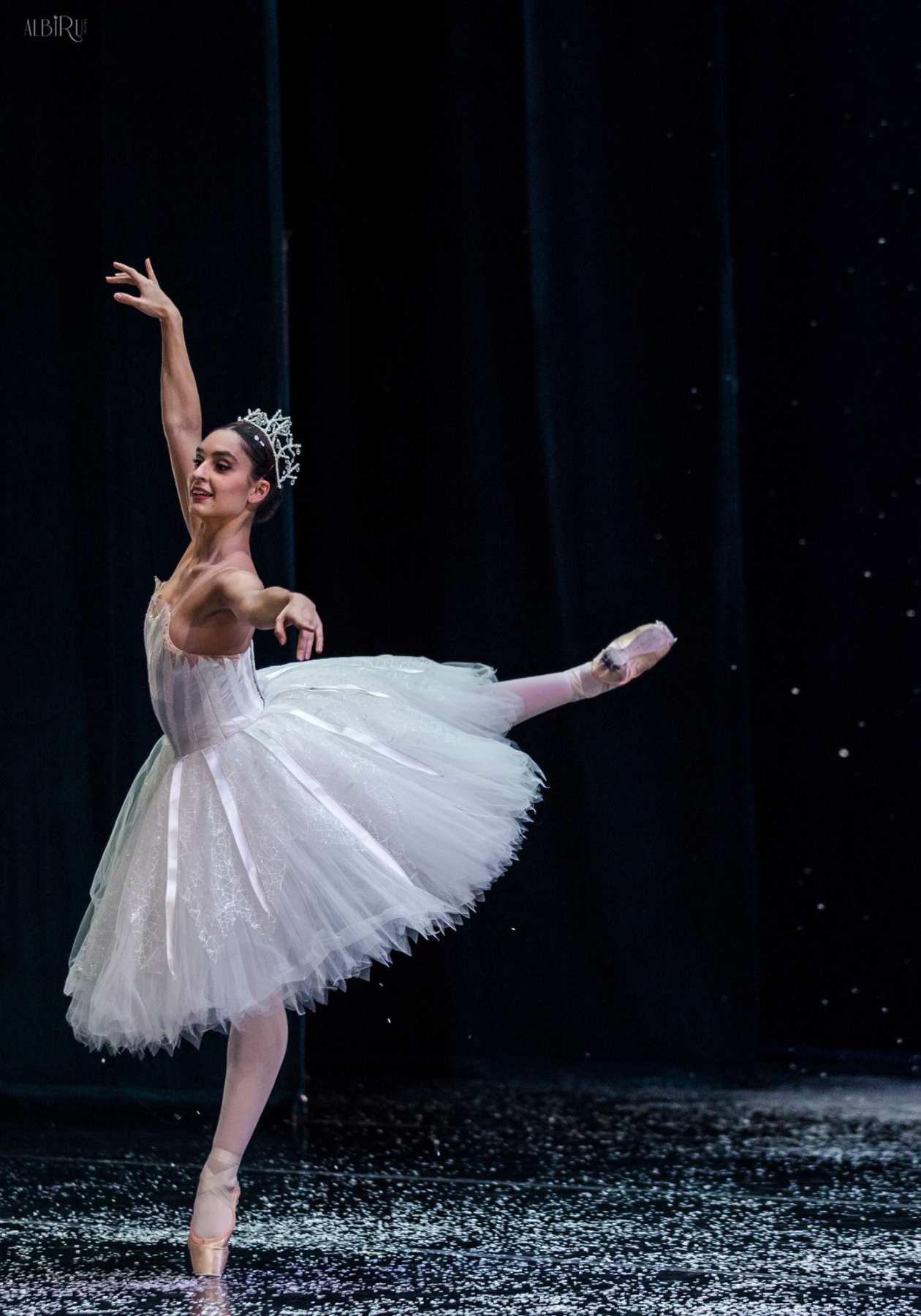Dancing around the world with Celia Dávila
Celia Dávila, a Basque dancer from the city of Vitoria, first had contact with dance at barely the age of four. The passion she feels for this discipline, and most especially for ballet, led her to winning scholarships in Cannes, Monaco and Boston. In 2016, she joined the Carmina Ocaña and Pablo Savoye dance school. There, she danced the part of Olga in Picasso, by the renowned Antonio Ruiz and, after taking part in Don Quijote Suite, by José Carlos Martínez, she later joined the CND under the direction of Joaquín De Luz.
I read that you started dance at four; a really early age. Can you tell me what that first experience of dance was like?
I was always a somewhat active girl and I have always loved to dance and was lucky to have parents who saw that in me. They signed me up at a small dance school in Vitoria called Traspasos; I started there at four and stayed up to seven years of age. It wasn’t a ballet school but rather a kind of creative dance school, getting kids to move and do their thing. Later, at “ikastola” (school), a friend in the year above me started going to the dance conservatory and my mum asked if I wanted to join too; to which, of course, I said yes. Meanwhile, as my parents have always loved art and culture, they sent me to study music too and I got an elementary grade in violin. I studied at both conservatories up to sixth year at primary school, but then, with the start of first year of high school and the higher demands of the intermediate grades, the demands were high and I realised the violin was not for me.
Being from Vitoria, have you ever danced “euskal dantzak” (Basque folk dances) as a “neska” (the folkloric name for the girl dancer), during the Vitoria festivities?
They began with “euskal dantzak” classes at the conservatory. In all local festivities, some of us always had to dance an “aurresku” (a classic dance of homage and respect) before each performance. I can’t remember if I got to perform it myself or not but I had to learn it anyway. And, sure, in the Vitoria festivities, you always do a dance with your friends.
You’ve received a number of scholarships with which you have been able to study in Cannes and Monaco. What were these international experiences like for you?
I did a few contests in Spain. Twice, they gave me scholarships to go to Cannes. The first time, I went with my ballet teacher, Elena Llanos, who taught me so much in ballet. Of course, it’s different going with your teacher and going alone. The first time, I was very small; somewhere between thirteen and fourteen. I have to say it was really great because in Cannes they teach a bunch of disciplines. In the morning there was floor and bar, which is very typical in France. Then ballet class, pointes and, later, repertoire… Apart from those obligatory classes, there were also voluntary classes in the afternoons, like contemporary, jazz… The chance of seeing all that at the age of fourteen opened up a new world to me.
Some years on, I did a course in Boston (USA) and went there on my own (I was 17 then) and it was what I call a “reality check” experience. They even lost my luggage and it was “one problem after another”. I learnt a lot; not just in dance but also about life. It was an eyeopener. Then, in Monaco, I did the audition for the scholarship course. It was a week after Boston and it was great because I was back in Europe and it felt like home.
You have also won a number of contests, such as Ribarroja del Turia, the Barcelona City Contest, The Torrelavega Contest and a series of prices in Bilbao. Which one was most special to you?
The first one was the most special; in Bilbao. I was 14, I think, and I’d never entered a contest. In the world of ballet, contests are not like other contests, such as sports or rhythmic gymnastics, for instance, where you score according to times or certain set movements. Ballet is very subjective and there is a very personal side to it. And as my conservatory only picked the “girl stars”—those with a special talent—I was really shocked when my teacher picked me. I took it as if it were a short trip: “Ok, I’ll see the Esukalduna Theatre from the inside and the changing rooms and then I’ll go home.” So, when I won, the sensation of such recognition for all that hard work I’d put in was just mind blowing.
Ballet is also very aesthetic in terms of the dancer’s physique (a nice instep, a marked en dehors). Those with a standard-type physique have to work double. In my opinion, you need to have something special. The fact that, in my case, that was valued in me, at the age of 13 or 14, was a real boost. Aesthetics have to be there because, in the end, ballet IS aesthetics. But I think an artist has to have something remarkable within and that is where taste comes in, which is a very subjective thing. In some schools or conservatories, they really put you through the paces with the physique side. In my case, that wasn’t over the top. But it’s true that, when you go into the real dance world, there are people in very good companies that are not as technically prepared as you but, as they have better physical attributes, they get in. When somebody values that small artist that you carry within you—which is not always easy to get out—well, it a really thrilling thing.
In 2016, you moved to Madrid for your continued training. What was that change like for you? Do you think there’s a need to create more beacon dance schools so that people aren’t forced to move to the capital?
That a complicated question because, in my opinion, the important thing about teaching is who you learn from or who is teaching you; not the place you learn. In life in general, name and fame always grab the attention. Many companies have their own school and, in my opinion, most people go to study at those places due to their renown and prestige, without realising that the important thing is the person who is going to teach you.
For instance, the most prestigious schools are those where the best dancers in dance history have been trained: Bournonville, Balanchine, Nureyev, Margot Fonteyn, Baryshnikov, Makarova etc. But, nowadays, they are governed by their own style and technique. Take the English National Ballet; the English have their own technique but, in the Ópera de París the French also have their own. In my opinion, they don’t tend to adapt that much to the physique of the dancer but, rather, focus on pure technique and discipline.
In my case, I did a lot of auditions and was chosen by different schools. But I decided I needed to improve my technique and so I chose a school where I knew who was giving the classes and how. That’s how I ended up studying with Carmina Ocaña, who was the teacher of my previous teacher Elena (she had attended different courses of hers) and Pablo Savoye. They both have a special way of working with each dancer, focused very much on the individual, and I really liked that. So, I made that decision; to go to Carmina’s school as the best option for me if I were to work in this in the future.
In 2018, you got to do the part of Olga in Picasso, by Antonio Ruíz. How did you construct that role? What was the experience like for you?
It was a lovely experience because he is one of the greats of Spanish and flamenco dance. It was an amazing opportunity for me because, also, when he created the Picasso piece, he did so with the great María Giménez, a dancer from the Victor Ullate school. So, you have Antonio Ruiz, this great figure, almost from a parallel world, and he goes and picks me! That, for me, was just amazing. I knew him because of the cultural influence my parents have on me; but there are many people don’t know about Spanish dance.
What’s more, the experience of travelling to Istanbul with a flamenco company was like something from another world. They are so completely different to us … the classical dancers I mean. I think we are a bit more disciplined. For instance, if tomorrow I have a performance, I go to bed early, I rest in order to feel good, I do my warming up, my class and finally the show. Not for them! They arrive an hour before the show, they do “a quick jig and flex”, do the show and done! They’ve spent the whole day going round town and, to top it all, they dance better than you (laughs). It’s amazing, the way they live, that passion… I loved the experience. I was the only one from classical dance and you see me stretching at the barre with my pointes and there they are, sitting on the floor, eating… I couldn’t believe my eyes! (laughs)
You are one of the most recent arrivals at the CND. In fact, you joined with the change of director in 2019. What were the auditions like for you? What does it mean to you to be dancing in a national company?
At that time, I was at a stage in my life when I didn’t really know what I was going to do and so I signed up for the auditions for the hell of it and I turned up very relaxed. When I discovered I had been picked for the next phase, I couldn’t believe it and said to myself “there’s got to be some kind of mistake here”. When they called us to each do a variation, one by one, I didn’t have those nerves you often get in an audition. I was calm, I think I felt certain they were not going to pick me and I thought, “oh well, another audition.” And I think that calm is what helped me dance better. I actually came second and went on the waiting list. When they called me in September to start, I already had a contract signed that I had to renounce. And that’s how I entered in the CND.
As a scoop, can you tell us who that other contract was with?
I was going to Ireland for three months with The National Dance Company of Ireland for a production of Swan Lake. As I had to sign in July and as the CND did not call me, I wasn’t going to hang around and so I decided to do it. And when INAEM called me in September, on behalf of the CND, I had to renounce the Irish gig. They were a bit cross because they were in the middle of making the costume… But it was much better for me to stay here. The CND is bigger and, being Spanish, I like to work in my own country because here, the dance world set-up is very complicated. Not only that but, also, the new director Joaquín De Luz was starting. New things were happening … and that really grabbed me
I’m really happy. I’m learning so much. I’m like a sponge. I stand in a corner and I listen to everything and observe… It’s such a nice profession.
Your first piece with the CND was the Don Quijote Suite, created by José Carlos Martínez but now with the CND directed by Joaquín De Luz. Did you get to work with both? What would you highlight about each of them?
The called me to dance during the last two weeks of José Carlos Martínez as part of the CND’s 40th birthday. It was a temporary supply contract for a fortnight and to dance the Don Quijote Suite, and I was very lucky as many dancers were on holiday and I got to dance like just another member of the company. I didn’t really realise the extent of it at the time (I was happy, of course), but with hindsight, I had the greatest time. I don’t think I’ve had another comparable professional experience related with dance and which left me feeling so proud. What’s more, I was working with a director who had actually not chosen me, because the audition I did was with Joaquín De Luz, not with José Carlos Martínez. To be honest, I was with José for a very short time. What I can say is he was very amiable, very calm… He allowed me to be just another dancer there.
And as Joaquín came from America, he has a different approach, which I think is a good thing for us. He has changed the structure of the Company a lot in comparison to José. We work really hard, for sure, but I really like the approach and focus of the work. I’m really happy.
And, talking of choreographers, how do you view the current situation of women choreographers?
It’s complicated. The world of ballet is sexist by accident. Boys don’t wear pointes, girls do… The rules in class are also sexist, though things are changing a bit now. For instance, the central barres are usually taken by the boys, not the girls… It’s deeply ingrained from what they teach you as a little kid. Ballet is sexist and that affects everything. There are fewer male ballet dancers, so the question of competitiveness is completely different from that of girls. I hope that, with time, the work of both genders is recognised in the same way. That is beginning to happen, but there’s a long way to go.
What ballet would you recommend for anybody who wanted to come and see you all dance?
It’s a question of taste. True, a person coming to see ballet for the first time normally loves it or sleeps through it. As a girl, I was a big ballet fan and would watch ballet videos every Saturday and Sunday with my mum, while by brother and father snoozed. I guess a full classical ballet can be a bit heavy going as they tend to be long. In Swan Lake, for instance, the first two acts are really nice but the third act can get a bit boring. Giselle is shorter but the second act can also get a bit heavy. For me, the funniest ballet is La Fille mal gardée, by Frederick Ashton, in the Royal Ballet version. It’s about a girl who is naughty, who wants to see her beau and her mother tells her off. There’s no sad serious or sad second act. The slow parts can get a bit boring I guess, if you don’t understand technique. But La Fille mal gardée is plain fun really and the audience love it. It a ballet I like a lot.
And to celebrate your own special day, what is your favourite birthday meal or dessert?
I’ve always been a big chocolate fan but never really into cakes that much. I guess my favourite cake is cheesecake, warm or cold. But watch out! It’s got to have a biscuit base. (laughs)
CELIA DÁVILA – CORPS DE BALLET CND
Interview: Sandra Cadenas








